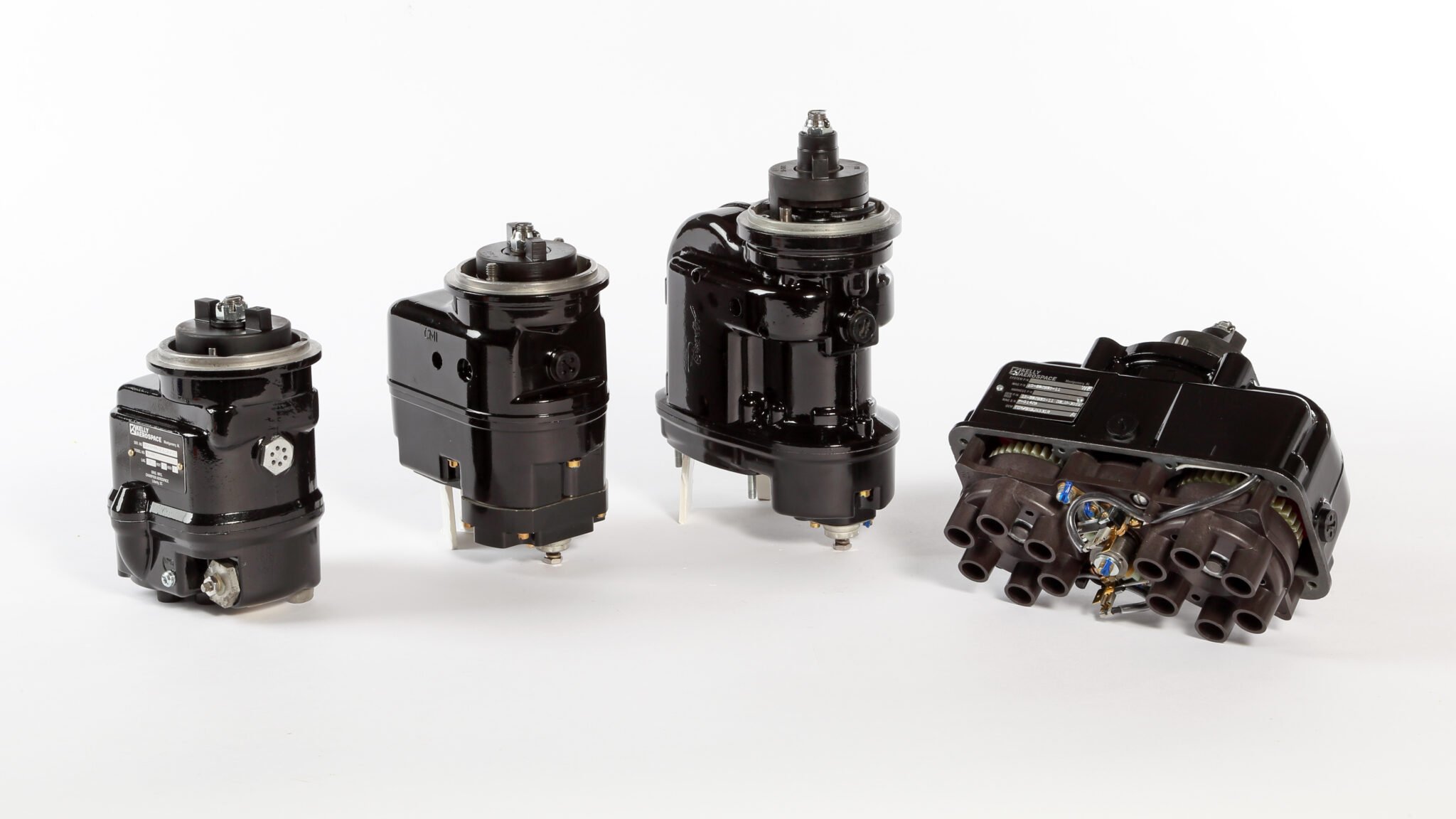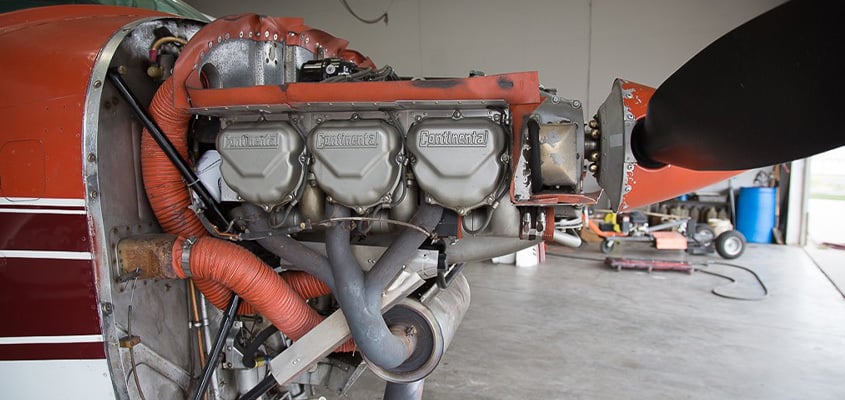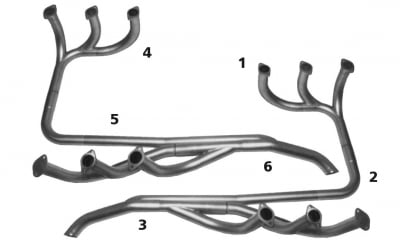Fuel Tank Maintenance: Ensuring Safe and Reliable Flight Operations
Aircraft fuel tanks serve as the lifeblood of an airplane, providing the necessary fuel to power the engines and sustain flight. While their primary function may seem straightforward, fuel tanks present unique challenges that necessitate specialized maintenance procedures. These reservoirs must be carefully maintained to prevent potentially catastrophic incidents caused by fuel leaks, contamination, or system malfunctions. In this article, we’re going to delve into the critical role that aircraft fuel tank maintenance plays in upholding flight safety. We’ll explore the various aspects of fuel tank management, from routine inspections to preventive measures, highlighting the significance of each step in ensuring the integrity and functionality of these essential components.  When it comes to ensuring the safety and optimal performance of your aircraft, there’s no room for compromise. That’s why Knisley Welding Aircraft Exhaust System is your trusted partner in providing top-notch services. With our specialized expertise in aircraft exhaust systems, including maintenance and repairs, we are dedicated to keeping your aircraft operating at its best.
When it comes to ensuring the safety and optimal performance of your aircraft, there’s no room for compromise. That’s why Knisley Welding Aircraft Exhaust System is your trusted partner in providing top-notch services. With our specialized expertise in aircraft exhaust systems, including maintenance and repairs, we are dedicated to keeping your aircraft operating at its best.
The Importance of Fuel Tank Maintenance
The Role of Fuel Tanks in Aircraft
Fuel tanks play a vital and indispensable role in the operation of aircraft. Serving as the storage reservoirs for the fuel that powers the aircraft’s engines, they are strategically positioned within the aircraft’s structure, typically integrated into the wings, fuselage, or tail section. The placement and design of fuel tanks are carefully engineered to ensure a continuous and reliable supply of fuel during flights. Without properly maintained fuel tanks, the aircraft would be unable to carry the required amount of fuel to support its intended flight operations. This would not only compromise the aircraft’s range and endurance but also jeopardize the safety and efficiency of flights. As such, the proper maintenance and integrity of fuel tanks are of utmost importance in the aviation industry. For those who own light aircraft, we have previously discussed twelve simple steps for refueling your aircraft in a separate blog post. If you are interested in learning more, be sure to check out: How To Fuel Light Aircraft By Yourself | Knisley Welding. This resource provides valuable insights and guidance specifically tailored to the refueling process for light aircraft.
Potential Risks and Hazards
Ensuring the safety and reliability of flight operations relies heavily on the meticulous maintenance of aircraft fuel tanks. This maintenance plays a vital role in averting inefficiencies in fuel consumption, decreased range, and engine power loss. Moreover, it guarantees the provision of clean and high-quality fuel to the engines. Through the effective management of potential risks and hazards, including fuel leaks, corrosion, contamination, fire, and explosions, fuel tank maintenance significantly enhances passenger safety. It also plays a crucial role in upholding the trust placed in the aviation industry and its stakeholders.
Regulatory Requirements and Industry Standards
Aircraft fuel tank maintenance is subject to rigorous regulations and guidelines set by regulatory authorities, such as the Federal Aviation Administration (FAA). These regulations, including the Fuel Tank Safety (FTS) rule, are designed to prevent fuel tank explosions and maintain the structural integrity of the fuel system. Adhering to these regulatory requirements is essential to ensure safety and reliability. In addition to regulations, industry organizations like the International Air Transport Association (IATA) play a crucial role in establishing standards and best practices for fuel tank maintenance. These standards not only promote safety but also foster uniformity across the aviation industry, ensuring consistent and high-quality maintenance procedures.
Pre-Maintenance Preparations
To minimize errors, ensure regulatory compliance, and enhance the overall safety and reliability of the aircraft fuel system, it is crucial to perform thorough pre-maintenance preparations. Before initiating maintenance on aircraft fuel tanks, it is important to follow these necessary steps:
- Proper planning ensures efficient and effective maintenance. This involves determining the scope of maintenance, scheduling downtime, and allocating necessary resources.
- A thorough assessment of the fuel tank’s condition should be conducted – this includes reviewing inspection reports, analyzing maintenance history, and identifying any areas of concern.
- A risk assessment must be performed to identify and evaluate potential risks. This includes those associated with maintenance activities, enabling the implementation of safety measures and risk mitigation strategies to safeguard personnel, equipment, and the aircraft.
Documentation and Approvals
Documentation and approvals play a crucial role in fuel tank maintenance for compliance and record-keeping purposes. Maintenance activities should be documented through work orders, task cards, checklists, and reports to ensure proper documentation. This documentation aids in tracking maintenance history, demonstrating compliance, and facilitating future references or audits. Additionally, regulatory approvals may be required depending on the jurisdiction and the type of maintenance being performed. Internal approvals within the organization are equally important, involving authorization from relevant stakeholders to align maintenance activities with organizational procedures and standards.
Training and Qualifications
Effective fuel tank maintenance necessitates the involvement of qualified personnel with the necessary training and qualifications. Various crucial factors should be considered to ensure competence in this field, including comprehensive training programs, adherence to safety procedures, and regulatory compliance. To begin with, comprehensive training programs should be in place to cover fuel tank inspection, repair techniques, safety protocols, and regulatory compliance. These training programs can be provided by aircraft manufacturers, regulatory authorities, or specialized training organizations. They equip maintenance personnel with the knowledge and skills required to perform their duties effectively and safely. Furthermore, personnel involved in fuel tank maintenance should hold relevant certifications obtained through recognized aviation training programs. These certifications serve as evidence of their expertise and competence in handling fuel tanks. Continued education is also vital in this field. It enables maintenance personnel to stay updated with industry practices, technological advancements, and regulatory changes. By staying informed, they can adapt to new developments and perform their tasks efficiently and safely.
Fuel Tank Inspection, Repair, and Maintenance
Utilizing the appropriate methods and techniques is essential so that fuel tank inspections, repair, and maintenance are effective in identifying any issues and ensuring the continued safety and reliability of the aircraft’s fuel system.
Methods and Techniques for Inspection
Thorough fuel tank inspections require the use of various methods and techniques to assess the tank’s condition accurately. Some key approaches include:
- Visual inspection: Visual examination involves physically inspecting the fuel tank for any visible signs of damage, corrosion, leaks, or abnormalities. Adequate lighting, mirrors, and borescopes may be utilized to access hard-to-reach areas and ensure a comprehensive inspection.
- Non-destructive testing (NDT): NDT techniques, such as ultrasonic testing (UT), radiography, or magnetic particle inspection, are employed to detect internal defects or structural issues without causing damage to the tank. UT employs high-frequency sound waves to identify cracks, corrosion, or other discontinuities within the tank structure.
- Internal borescope inspection: Internal inspection of the fuel tank is facilitated through the use of borescopes equipped with flexible probes and cameras. This method allows for a visual assessment of the tank’s interior, helping to identify corrosion, leaks, or other damages that may not be visible externally.
Routine Inspections and Areas Prone To Damage
Regular inspections are of utmost importance for the continual maintenance and monitoring of fuel tanks. The frequency of these inspections is determined by regulatory requirements, manufacturer recommendations, and the age of the aircraft. During inspections, special attention should be given to areas that are prone to damage. These vulnerable areas include welded joints and seams, access panels and hatches, flange connections, fittings, associated seals, and the external surfaces of the fuel tank. Thorough examination of these areas is essential to detect any signs of damage, such as corrosion, leaks, or structural issues.
Common Maintenance and Repair Tasks
Fuel tank repair and maintenance involve a range of tasks aimed at ensuring the integrity and functionality of the tank. Some common maintenance and repair tasks include:
- Patching leaks: When fuel leaks are detected, prompt repair is necessary. This may involve applying sealants or patches to the affected area to restore the tank’s integrity and prevent further leakage.
- Seal replacement: Seals, gaskets, and O-rings within the fuel tank may deteriorate over time and require replacement. This ensures proper sealing of connections and prevents fuel leaks.
- Corrosion treatment: If corrosion is present, it must be treated and removed to prevent further degradation. This may involve sanding, cleaning, and applying protective coatings to prevent corrosion from reoccurring.
- Component replacement: Fuel system components such as fuel pumps, filters, or valves may require periodic replacement to maintain proper functionality and prevent system failures.
Approved Procedures and Compatible Materials
Fuel tank repair and maintenance should be carried out following approved procedures and using compatible materials to ensure safety and effectiveness. These include:
- Manufacturer guidelines: Aircraft manufacturers provide detailed repair and maintenance instructions specific to each aircraft model, which must be followed to ensure that repair procedures are carried out correctly and in accordance with industry standards.
- Approved repair procedures: Authorized maintenance organizations or regulatory authorities may establish approved repair procedures for fuel tanks. These procedures outline step-by-step instructions for specific repair tasks and should be strictly adhered to.
- Compatible materials: When conducting repairs, it is crucial to use materials that are approved and compatible with the specific fuel tank and its construction materials. Using incompatible materials can compromise the tank’s integrity or lead to chemical reactions that may cause damage.
Fuel Tank Safety Practices
Adherence to the following practices helps ensure the continued reliability and safety of the fuel system, minimizing the risk of failures or accidents during aircraft operations.
Grounding Procedures and Handling Flammable Materials
When working with fuel tanks, proper grounding procedures and safe handling of flammable materials are essential to prevent fire or explosion hazards, such as:
- Grounding equipment: All equipment used during fuel tank maintenance should be properly grounded. This helps dissipate any static electricity that could potentially ignite fuel vapors. Grounding cables and clamps should be securely attached to the aircraft structure or designated grounding points.
- Bonding: Bonding refers to connecting different conductive parts to eliminate any potential difference in electrical potential. Bonding helps prevent sparks that could result from static electricity discharge when materials or equipment come into contact. Bonding should be employed when transferring fuel or working with conductive materials.
- Handling flammable materials: Flammable materials, such as fuel, solvents, and cleaning agents, should be handled with caution, and only approved containers should be used for storing and transferring flammable materials. Open flames or other potential ignition sources should be kept away from the work area.
- No smoking policy: Smoking should be strictly prohibited in and around fuel tank maintenance areas. The presence of fuel vapors increases the risk of fire or explosion, and smoking poses an immediate ignition source.
Personal Protective Equipment
Personal protective equipment (PPE) is crucial for the safety of personnel involved in fuel tank maintenance. The following PPE should be worn:
- Gloves: Proper gloves should be worn to protect hands from chemicals, fuel, sharp edges, or rough surfaces. Fuel-resistant gloves made of materials such as nitrile or neoprene are commonly used.
- Safety glasses or goggles: Eye protection, such as glasses or goggles with side shields, is necessary to guard against potential hazards, including fuel splashes, debris, or chemicals. They should be worn during all fuel tank maintenance activities.
- Flame-resistant clothing: Flame-resistant clothing helps protect against potential ignition sources and sparks. Clothing made from fire-retardant materials, such as Nomex or Kevlar, should be worn to reduce the risk of burns or injury.
- Respirators: Respiratory protection may be required depending on the maintenance tasks being performed. Respirators help protect against inhalation of fuel vapors, fumes, or harmful chemicals. The type of respirator to be used should be selected based on the specific hazards and exposure levels.
Maintaining a Clean and Organized Work Area
Maintaining a clean and organized work area is crucial for fuel tank safety. To ensure a safe environment, remove ignition sources and properly maintain electrical equipment. Containment systems should be utilized to prevent fuel spills and facilitate cleanup, while proper waste disposal procedures must be followed. Tools and equipment should also be organized and stored appropriately to minimize risks and maintain an orderly work area. These practices contribute to a safe and efficient fuel tank maintenance process.
Final Remarks: Ensuring Reliable and Safe Flight Operations
Prioritizing fuel tank maintenance is a crucial step toward maintaining safe and efficient flight operations. By mitigating potential risks and hazards, adhering to regulatory requirements and industry standards, and following proper maintenance practices, aircraft operators can enhance passenger safety, prevent accidents, and maintain a reputable position in the aviation industry. Secure your aircraft’s exhaust system with Knisley Welding Aircraft Exhaust System.


